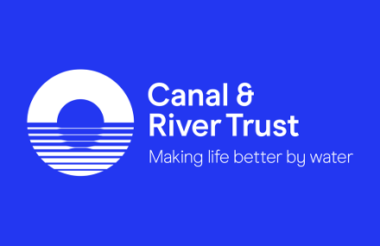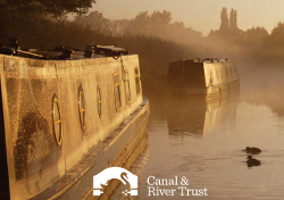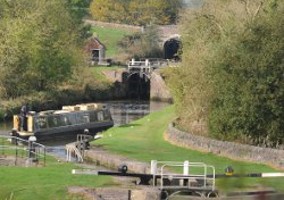Volunteering hours at the Canal & River Trust have increased by 14 per cent in the last year to over 600,000.
According to its annual report and accounts for the year to 31 March 2018, the charity benefited from 616,300 volunteer hours in that year, beating its target of 600,000, and up from 540,000 in 2016/17.
In 2012, when the Canal & River Trust took over running waterways from a government agency, it benetifted from 20,000 volunteer hours each year.
The number of volunteer hours has increased each year since.
In the foreword its chief executive, Richary Parry, and chair, Alan Leighton, said: “Our volunteer growth has been spectacular since 2012, with the time given by our dedicated volunteers exceeding 600,000 hours in the past year.”
They said that there was a “growing range of activities” that are carried out by volunteers and that 96 per cent of its volunteers would recommend the experience.
New branding
The level of public awareness of the trust is lower than it hoped. It had a target for 40 per cent of people to be aware of the charity, but reached 36 per cent earlier this year, which is slightly up on last year’s 33 per cent.
The Canal & River Trust launched new branding this May. In its accounts it said this is about widening its reach.
It has a new abstract logo, using blues and greens instead of black. There’s also a new strapline “Making life better by water”.
Earlier this year Leighton wrote in a blog on the charity’s website, that: “Our main objective is for as many people as possible to enjoy the waterways and their surroundings. This isn’t a new direction for us. It’s a continuation of the vision we’ve had for the last five years; ‘Living waterways, transforming places and enriching lives’.
Strong investment performance
The charity’s income was relatively stable at £204.9m, increasing slightly from £202.9m last year.
It saw a 10 per cent growth in the value of its investment portfolio to £867.2m, with its property portfolio exceeding the market benchmark and delivering a 15 per cent return.
Income from investment and property was £51.9m, and is now its single largest source of income, overtaking its funding from the Department for the Environment, Farming and Rural Affairs, which gave it £50.7m.
Around 3 per cent from donations, coming to £6.1m – though this is just over double its fundraising income last year. It also earns income from boat licenses and moorings and other types commercial activity.
Key statistics
Income
- Total: £204.9m, up from £202.9m last year.
- Available for charitable activities: £159.7m, down from £161.7m last year.
Expenditure
- Total: £182m, down from 182.6m last year.
- On charitable activities: £153m – this includes maintenance and repairs, major works, supervising volunteers and a range of other things.
Full time equivalent staff
- 1,698, up from 1,689 the previous year.
Highest salary
- The remuneration during the year for Richard Parry, chief executive, comprised a salary of £183,105, pension allowance of £15,784, car allowance of £9,768 and benefits in kind of £1,434, totalling £210,091.
- Stuart Mills, chief investment officer, received a salary of £167,133, pension allowance of £14,407, car allowance of £9,768, performance related pay of £26,385 reflecting the strong performance of our property portfolio in the year ended 31 March 2017, and benefits in kind of £2,215, totalling £219,908.
- 84 people earned over £60,000.
|
Related articles












